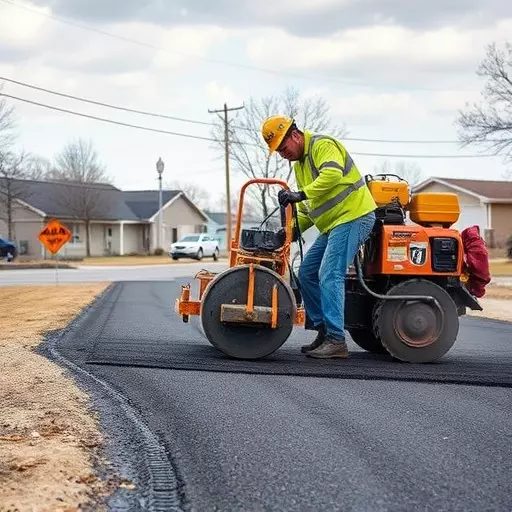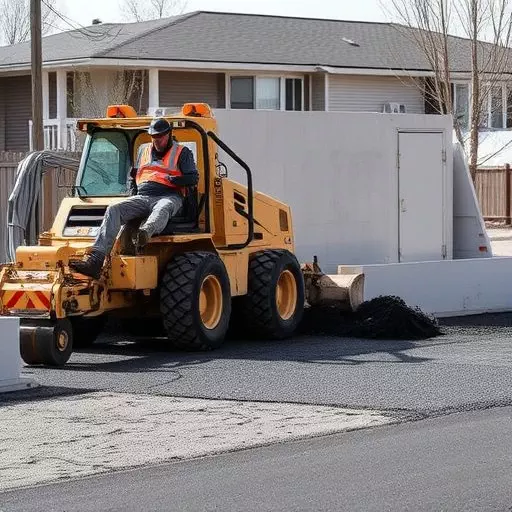Asphalt demolition contractors in Toledo must adopt sustainable practices, focusing on efficient and eco-friendly asphalt removal techniques like pavement milling. This method grinds existing surfaces into recyclable materials, preserving base layers and promoting a circular economy. Avoiding traditional hot cutting or burning methods, which harm the environment and human health, modern alternatives like cold cutting and sawing further emphasize Toledo's commitment to greener urban renewal projects.
“Navigating the complex landscape of asphalt disposal regulations is crucial for Toledo’s asphalt demolition contractors. This comprehensive guide aims to empower professionals with insights into managing asphalt removal efficiently and sustainably. We explore common techniques like pavement milling, delving into its environmental benefits as a key component in the city’s infrastructure maintenance. By understanding and adhering to local rules, contractors can ensure responsible disposal practices, contributing to Toledo’s vibrant tapestry of sustainable construction.”
- Understanding Asphalt Disposal Regulations: A Guide for Asphalt Demolition Contractors in Toledo
- Common Asphalt Removal Techniques and Their Environmental Impact
- Pavement Milling: An Efficient Method for Sustainable Asphalt Disposal
Understanding Asphalt Disposal Regulations: A Guide for Asphalt Demolition Contractors in Toledo
Understanding Asphalt Disposal Regulations is paramount for any asphalt demolition contractor in Toledo looking to operate both efficiently and responsibly. These regulations govern not just how asphalt is removed, but also its subsequent handling, storage, and disposal. This is particularly crucial given the environmental impact of improper disposal methods.
Demolition contractors in Toledo must familiarize themselves with various asphalt removal techniques, including pavement milling, which grinds up existing asphalt surfaces into smaller pieces, allowing for easier recycling or reuse. It’s essential to adhere to local guidelines regarding storage and transportation of the removed material to ensure compliance. By staying informed about these regulations, contractors can contribute to a more sustainable construction process while meeting all necessary legal requirements.
Common Asphalt Removal Techniques and Their Environmental Impact
The process of asphalt removal is a critical aspect of infrastructure maintenance and redevelopment, and it involves several techniques that have varying environmental implications. One common approach used by an asphalt demolition contractor in Toledo or any urban area is pavement milling. This method utilizes specialized equipment to mechanically remove the top layer of asphalt while minimizing damage to the base material below. It’s a precise technique that allows for the recovery of valuable aggregate and asphalt binder, which can be recycled and reused, thereby reducing the environmental impact and costs associated with new material production.
However, not all removal methods are created equal. Traditional asphalt demolition often involves hot cutting or burning the pavement to break it down, leading to air pollution and potential health hazards for workers and nearby residents. These techniques also contribute to greenhouse gas emissions. In contrast, modern methods like cold cutting or sawing use less energy and produce fewer emissions while still ensuring efficient asphalt removal. By adopting these environmentally conscious asphalt removal techniques, contractors in Toledo can play a significant role in sustainable urban renewal, promoting a greener and healthier living environment for the community.
Pavement Milling: An Efficient Method for Sustainable Asphalt Disposal
Pavement milling is an eco-friendly and efficient method for sustainable asphalt disposal, gaining popularity among asphalt demolition contractors in Toledo. This technique involves using specialized equipment to remove the top layer of asphalt from roads, parking lots, or other surfaces while minimizing waste generation. The process starts with a mill machine that grinds the pavement into small pieces, allowing for easy collection and recycling. This method is particularly beneficial as it recovers valuable materials, reducing the need for new aggregates and bitumen, thus lowering environmental impact.
Compared to traditional asphalt removal techniques, pavement milling offers several advantages. It is less labor-intensive, quicker, and more precise, resulting in less dust and noise pollution. The milled material can be processed and reused, contributing to cost savings and a circular economy. This sustainable approach not only benefits the environment but also extends the life of existing infrastructure by providing a fresh surface for new pavement applications. Therefore, Toledo-based asphalt demolition contractors are increasingly opting for pavement milling as a responsible and efficient method for asphalt disposal.


